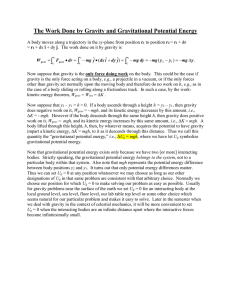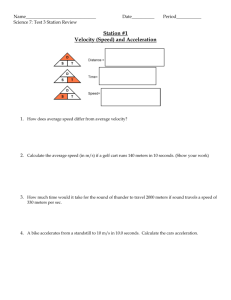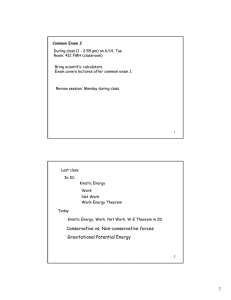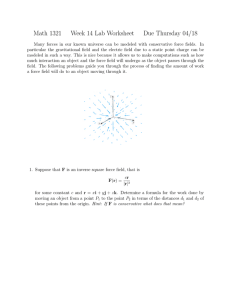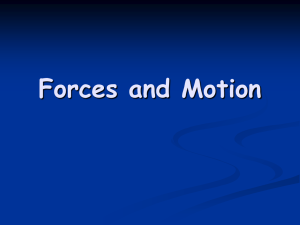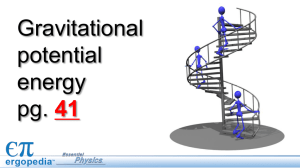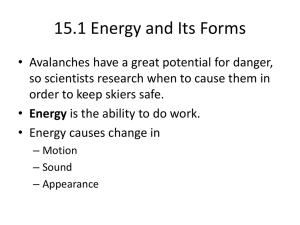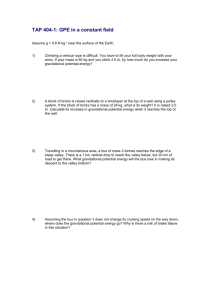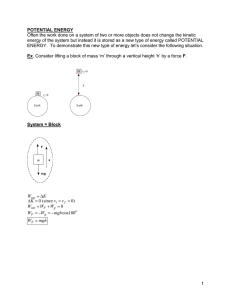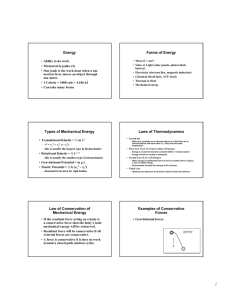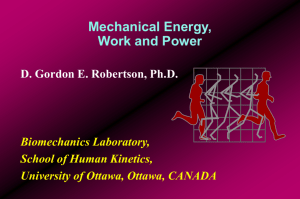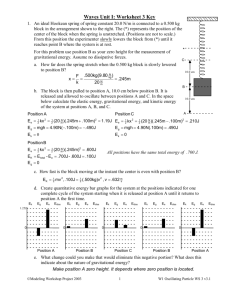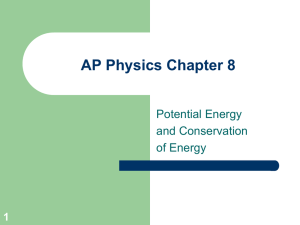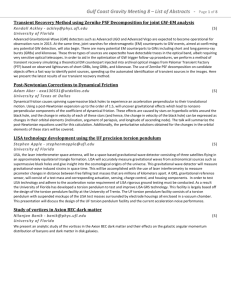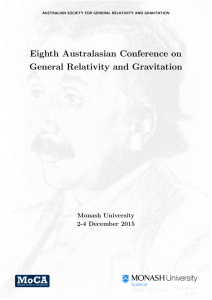Conservation of Energy and Momentum
advertisement
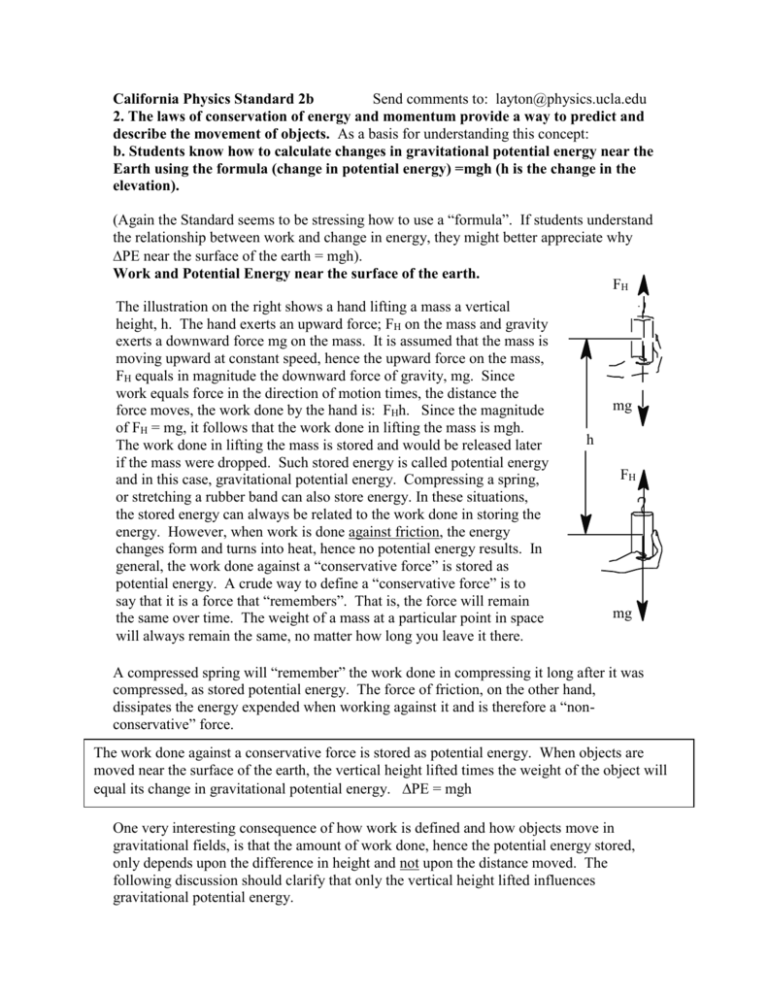
California Physics Standard 2b Send comments to: layton@physics.ucla.edu 2. The laws of conservation of energy and momentum provide a way to predict and describe the movement of objects. As a basis for understanding this concept: b. Students know how to calculate changes in gravitational potential energy near the Earth using the formula (change in potential energy) =mgh (h is the change in the elevation). (Again the Standard seems to be stressing how to use a “formula”. If students understand the relationship between work and change in energy, they might better appreciate why PE near the surface of the earth = mgh). Work and Potential Energy near the surface of the earth. FH The illustration on the right shows a hand lifting a mass a vertical height, h. The hand exerts an upward force; FH on the mass and gravity exerts a downward force mg on the mass. It is assumed that the mass is moving upward at constant speed, hence the upward force on the mass, FH equals in magnitude the downward force of gravity, mg. Since work equals force in the direction of motion times, the distance the mg force moves, the work done by the hand is: FHh. Since the magnitude of FH = mg, it follows that the work done in lifting the mass is mgh. h The work done in lifting the mass is stored and would be released later if the mass were dropped. Such stored energy is called potential energy FH and in this case, gravitational potential energy. Compressing a spring, or stretching a rubber band can also store energy. In these situations, the stored energy can always be related to the work done in storing the energy. However, when work is done against friction, the energy changes form and turns into heat, hence no potential energy results. In general, the work done against a “conservative force” is stored as potential energy. A crude way to define a “conservative force” is to say that it is a force that “remembers”. That is, the force will remain mg the same over time. The weight of a mass at a particular point in space will always remain the same, no matter how long you leave it there. A compressed spring will “remember” the work done in compressing it long after it was compressed, as stored potential energy. The force of friction, on the other hand, dissipates the energy expended when working against it and is therefore a “nonconservative” force. The work done against a conservative force is stored as potential energy. When objects are moved near the surface of the earth, the vertical height lifted times the weight of the object will equal its change in gravitational potential energy. PE = mgh One very interesting consequence of how work is defined and how objects move in gravitational fields, is that the amount of work done, hence the potential energy stored, only depends upon the difference in height and not upon the distance moved. The following discussion should clarify that only the vertical height lifted influences gravitational potential energy. Work is defined as the component of force in the direction of motion times the distance the force moves. This means moving in a direction different from the direction of the force of gravity could involve a greater distance but since the component of the force in the direction of motion is less, the resulting work done is the same. A B C In the illustrations “A, B, C” above, the mass is always moved the same height h. In “A” the force is in the same direction as the motion so the work done is Fh. In “B”, however, the distance moved is greater yet the work is still Fh. This is easy to show using trig: As illustrated on the right, if the vertical height is h and the angle of the distance moved is with respect to h, then the distance moved is h divided by cos. On the other hand, the component of the force in the direction moved is Fcos. Hence the product still comes out to be Fh. The work is the same. h h/cos F Fcos Another way of showing the same result without trig is to recall the definition of work and assert that moving in a direction perpendicular to the force does no work. Hence in case B, we could have initially moved directly under the intended final location horizontally, doing no work, then moved vertically upward a distance h applying a force F and we would have done the same amount of work. This is also true for the complex path illustrated in C. The fact that the work done is independent of path in a conservative force field will be very useful in the next Standard.

